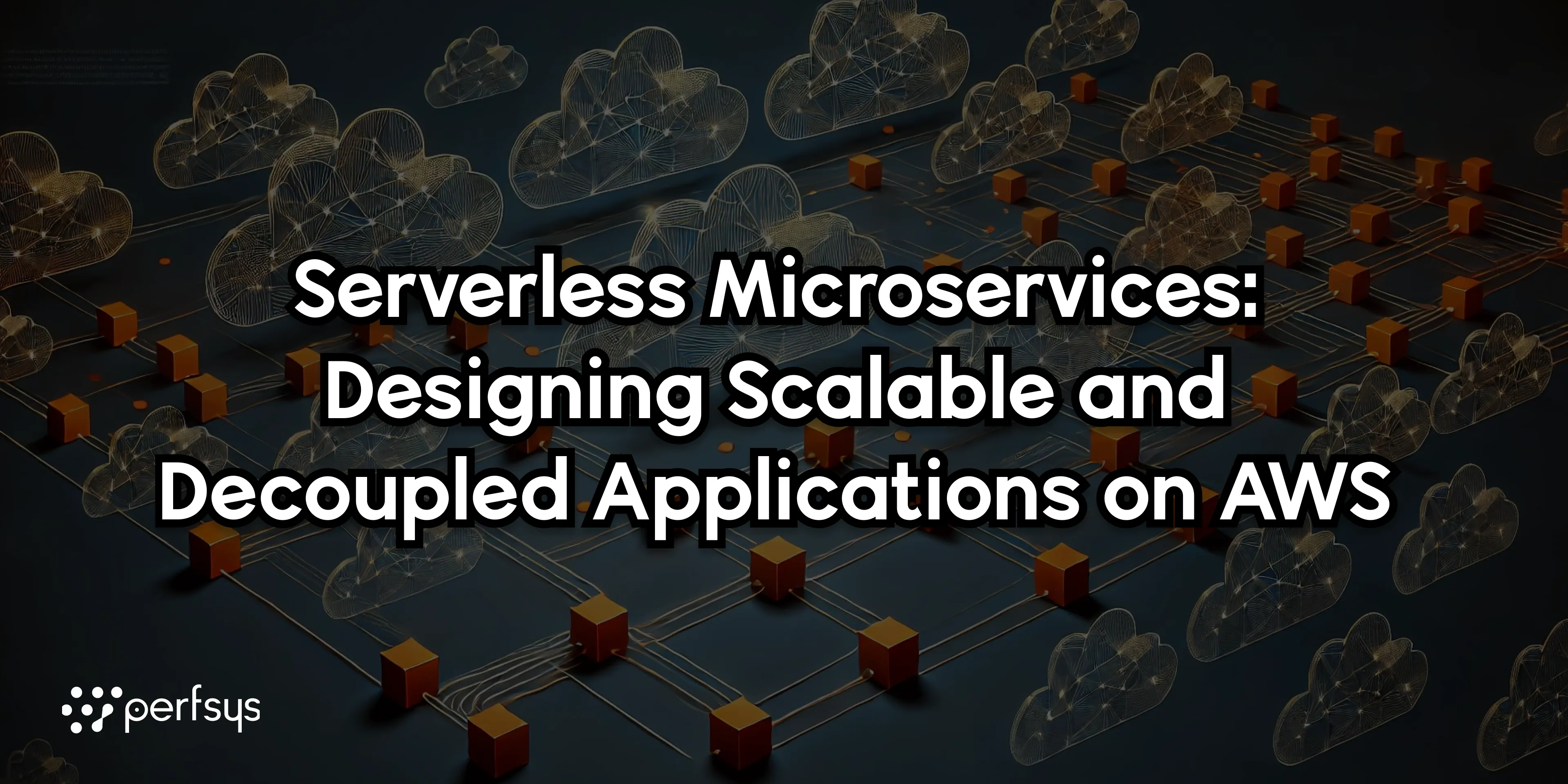Designing Scalable and Decoupled Applications on AWS

In today’s fast-paced digital landscape, businesses are constantly seeking ways to build applications that are both scalable and resilient. Serverless microservices architecture offers a modern approach to application development, enabling organizations to design scalable, cost-efficient, and decoupled systems that can easily adapt to changing demands.
By leveraging AWS serverless technologies, companies can focus on innovation and business value, rather than managing infrastructure. This guide explores best practices for designing serverless microservices on AWS, focusing on key services like API Gateway, AWS Step Functions, SQS, SNS, EventBridge, and DynamoDB.
What Are Serverless Microservices?
Serverless microservices are a combination of two powerful architectural paradigms: serverless computing and microservices. This approach involves breaking down applications into smaller, independently deployable services (microservices) that are managed and scaled automatically by cloud providers like AWS (serverless).
This combination enhances application agility, reduces costs, and improves scalability, making it ideal for modern cloud-native applications.
Key AWS Services for Serverless Microservices Architecture
- — API Gateway:
Amazon API Gateway is a fully managed service that makes it easy to create, publish, maintain, monitor, and secure APIs. It acts as the front door for applications, allowing you to expose your microservices to external clients in a secure and scalable manner.
- — AWS Step Functions:
AWS Step Functions allow you to coordinate multiple AWS services into serverless workflows, enabling complex processes to be broken down into smaller, manageable steps. This service is ideal for building workflows that involve chaining multiple microservices, ensuring that each service remains decoupled yet coordinated.
- — Amazon SQS (Simple Queue Service):
SQS is a fully managed message queuing service that enables you to decouple and scale microservices, distributed systems, and serverless applications. By using SQS, microservices can communicate asynchronously, allowing them to operate independently and handle varying loads without direct dependencies.
- — Amazon SNS (Simple Notification Service):
SNS is a fully managed messaging service for sending messages from one service to multiple subscribers. It is commonly used in microservices architectures for broadcasting messages and events across different services, enabling real-time communication and system-wide notifications.
- — Amazon EventBridge:
EventBridge is a serverless event bus that makes it easy to connect applications using data from your own applications, integrated SaaS applications, and AWS services. EventBridge simplifies the creation of event-driven architectures, allowing microservices to respond to events in real time and remain loosely coupled.
- — Amazon DynamoDB:
DynamoDB is a fully managed NoSQL database that provides fast and predictable performance with seamless scalability. It is a key component in serverless microservices architectures, offering low-latency data access for microservices without the need for manual database scaling.
Best Practices for Designing Serverless Microservices on AWS
- — Decouple Services with Asynchronous Communication:
Utilize Amazon SQS and Amazon SNS to enable asynchronous communication between microservices. This decouples services, allowing them to function independently and scale separately, which enhances overall system resilience and flexibility.
Example: Use SQS to queue tasks that need to be processed by another service, and SNS to notify multiple services of changes or events, such as user sign-ups or order completions.
- — Implement API Gateway for Secure and Scalable API Management:
Use API Gateway to expose your microservices via RESTful APIs. API Gateway handles all aspects of API management, including traffic management, authorization and access control, monitoring, and versioning.
Example: Create RESTful endpoints for user authentication, product catalog, and order processing, each managed by separate microservices, but unified under a single API gateway.
- — Leverage AWS Step Functions for Orchestrating Microservices:
Use Step Functions to coordinate microservices workflows, ensuring that each step in a process is executed in the correct order with appropriate error handling. This is especially useful for long-running or complex transactions that require multiple microservices to work together.
Example: Orchestrate a multi-step order processing workflow that includes inventory checking, payment processing, and shipping notification, each handled by different microservices.
- — Design for Event-Driven Architectures with EventBridge:
Use Amazon EventBridge to build event-driven architectures where microservices react to changes or specific conditions in real time. EventBridge allows you to define custom event buses and rules that trigger microservices based on incoming events.
Example: Automatically trigger a notification service when a new user registers, or kick off data processing workflows when new data arrives in S3.
- — Optimize Performance and Cost with DynamoDB:
DynamoDB is ideal for microservices requiring low-latency access to data. Use its on-demand capacity mode to automatically scale based on traffic, ensuring cost-efficiency and performance.
Example: Use DynamoDB for storing user session data, product catalog information, or other high-traffic datasets that require fast read and write operations.
- — Implement Robust Monitoring and Logging:
Use AWS CloudWatch and AWS X-Ray to monitor your serverless microservices. These tools provide insights into performance metrics, trace requests, and diagnose errors across your microservices architecture.
Example: Set up CloudWatch alarms to alert your team when a service exceeds certain latency thresholds or error rates, enabling proactive performance management.
- — Ensure Security and Access Control:
Utilize AWS IAM roles and policies to manage access and permissions for your microservices. API Gateway also supports AWS WAF for additional security measures like blocking common web exploits.
Example: Assign least-privilege IAM roles to Lambda functions, ensuring that each microservice has only the permissions it needs to perform its tasks.
Benefits of Serverless Microservices on AWS
Increased Agility: By decoupling services and leveraging serverless architecture, teams can develop, deploy, and update microservices independently, speeding up development cycles and reducing time-to-market.
Scalability: AWS’s serverless services automatically handle scaling, ensuring that your microservices can cope with varying loads without manual intervention.
Cost Efficiency: With a pay-as-you-go model, serverless microservices reduce costs by charging only for the compute time and resources used, eliminating expenses for idle capacity.
Improved Resilience: Decoupling and asynchronous communication via SQS, SNS, and EventBridge reduce single points of failure, enhancing the overall resilience of your applications.
Conclusion
Designing serverless microservices on AWS enables businesses to build scalable, decoupled, and resilient applications that can grow with their needs. By leveraging key AWS services like API Gateway, AWS Step Functions, SQS, SNS, EventBridge, and DynamoDB, organizations can achieve high performance, cost-efficiency, and operational excellence.
At Perfsys, we specialize in helping businesses transition to serverless microservices architecture, unlocking the full potential of AWS to drive innovation and success.
Ready to Transform Your Application Architecture?
Contact Perfsys today to learn more about how our expertise in AWS serverless microservices can help you design scalable and decoupled applications that meet your business goals.
